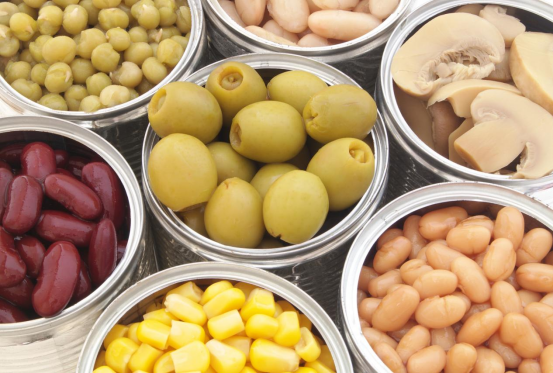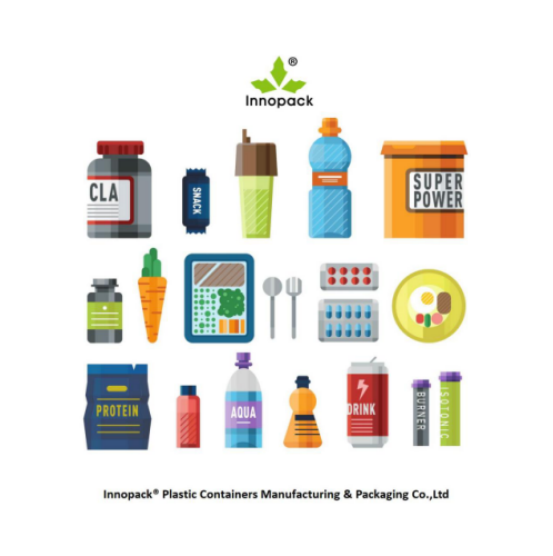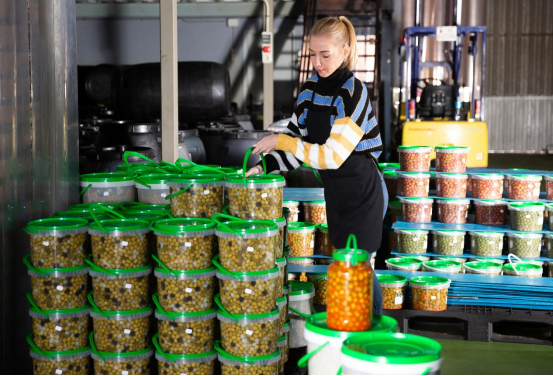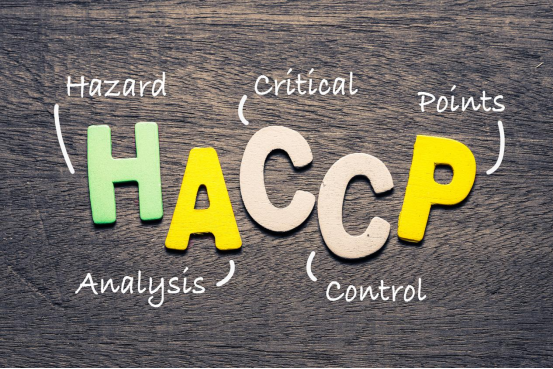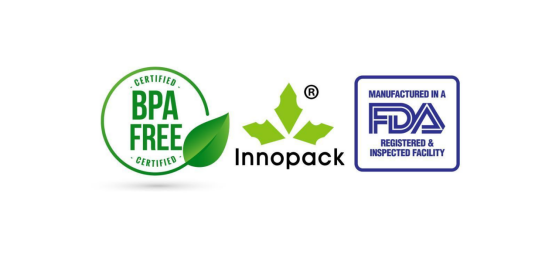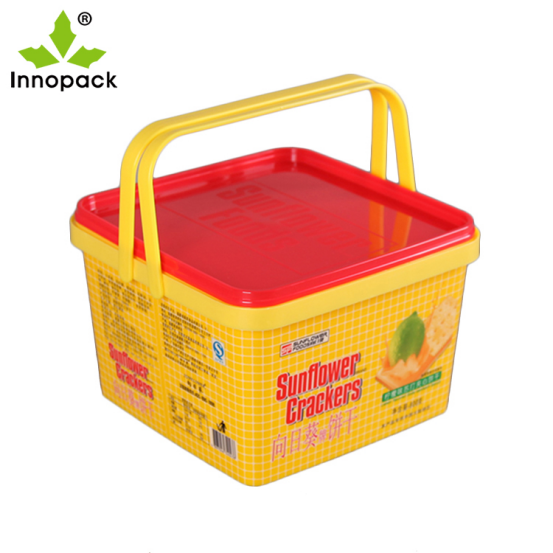The FDA approves, HACCP certificates our food grade storage buckets, which we make from strong plastic with a low melting point. This method fast manufactures the highest quality buckets for secure food storage and superior impact resistance.
(image: common metal can packed food)
They come with enhanced Saturn rings to avoid bucket deformation and consistently thick walls for ideal stacking durability. Moreover, they have a tapered structure for effortless separation. Furthermore, we manufacture our buckets in China and they do not contain BPA.
What is BPA?
Bisphenol A (BPA) is an industrial chemical that can get into your food and drink. Some experts claim that it is toxic and people should try to avoid exposure to it.
Bisphenol A is commonly added to many goods, including cosmetic containers and hygiene products. It was first discovered in the 1890s, but in the 1950s chemists realized that it could be mixed with other compounds to produce strong, flexible plastics which are made from PVC and others.
However, not all plastic are made from same raw material, the container that are made from pure PP(polypropylene) and pure HDPE (High Density Polyethylene) are non-toxic, which is BPA free and food -safe.
(image: Innopack® produced food grade buckets for Australian Lobster farmer)
The Side Effects of BPA
Today, some BPA-containing plastics are unfortunately used in food containers, baby bottles, and other items (the European Union USA and China have banned
polycarbonate baby bottles and other BPA-containing baby bottles). BPA is also used to make epoxy resins, which are applied to the lining of canned food containers to prevent metal corrosion and breakage.
BPA might causing side effects to human:
- Might causing endocrine disrupting
- Might causing reproduction toxicity
- Might increasing the risk in overweight
- Might causing diabetes or metabolic disease
- Might effectschild mental health( anxiety,depression, ADHD)
“the US Food and Drug Administration (FDA) issued its most recent report in 2014 that is confirming the original daily exposure limit of 23 micro grams per pound of body weight; which is at a 50 micro grams per kilogram maximum), and concluding that BPA exposure is safe at currently permitted levels.” (Jason August. 2014, June. Memorandum,retrieved from https://www.fda.gov/media/90124/download).
(image: innopack® plastic packaging for food industry and medical using)
What is Food Grade Plastic?
The primary concern with plastic buckets is often, “are they food safe?” producers classify plastics by a number inside a recycle triangle symbol. Mostly symbols will appears at bottom of buckets, jars,bottles or other items.
The majority of plastic buckets bear a #2 within this small triangle. #2 indicates that the bucket is made from HDPE plastic. While most of these buckets are food-safe, there are exceptions.
The addition of dye to plastic disqualifies it from being a USDA-certified food-safe bucket. The use of recycled HDPE plastic can sometimes prevent a bucket producer from obtaining USDA food grade certification. If you use the bucket to store non-food items such as paints and chemicals, it becomes unsafe for food storage. You should always purchase new food-grade buckets.
Plseae remember #5 and #2 plastic is always BPA-free. What is a Food Grade Bucket?
Wondering if your bucket is suitable for food storage? It’s simple to verify!
Firstly, locate the recycling symbol. #5 PP or #2 HDPE plastic as food-safe. This plastic has food safe and tightly packed molecules.
This makes it more stable and less likely to let substances pass through. This is in comparison to other plastics. This makes the bucket the optimal choice due to its superior durability.
Furthermore, it’s important to note that you cannot use any colorants. Food grade buckets only consider white plastic buckets, not colored ones. Click here for more detailed information about food grade plastic.
Our buckets are designed to withstand exposure to solvents and are suitable for use with various coatings.
(photo:leak-proof PP or HDPE plastic buckets are perfect for storing marinated food)
Innopack® Food Grade Plastic Buckets
You can store a significant amount of food for an extended period in a compact area. You can reuse the buckets as often as you like.
Having an airtight seal for food storage is crucial, especially if you’re not planning to use Innopack® bucket liner as extra protection in buckets. Our 3.5-gallon and 5-gallon gamma lids provide such a seal.
If you’re using a bucket with a snap-on lid for food storage, make sure to use an airtight bag for your food. Snap-on lids are ideal for storing dry goods that need frequent access. You can easily take off and reseal them.
Our pails are impervious to solvents and can be safely used with paint, varnishes, concrete, sealants, and asphalt coatings. When you place a chemical in HDPE plastic, the plastic will absorb it.
This chemical can then seep into any food stored in the bucket afterward. Please ensure to use new food grade bucket to store foods, which buckets are made of plastic or stainless steel. We also offer a food-grade bucket inner for a complete food storage solution.
HACCP-SGS certified food safe manufacturing
HACCP (Hazard Analysis and Critical Control Points) is an internationally recognized standard that defines the requirements for effective control of food safety. It should be applied in the manufacturing of foods, ingredients and beverages and is a key element of the Codex General Principles of Food Hygiene.
On April 8th,2024. HACCP (Hazard Analysis and Critical Control Points) China SGS agent team came to Innopack® plastic container manufacturing and packaging for an annual audit. After HACCP audit plan checking, and went over food grade buckets producing line; Audit team leader Ms. Wilmet Wang said “I am satisfied and approved that innopack® can export plastic buckets that meet the quality standards and conform to food grade. What impressed me the most was your lobster bucket”
Ms. Wilmet Wang (HACCP audit leader) claim the principle on food grade buckets which has to follow the HACCP:
- Conduct biological, chemical or physical hazard analysis of food
- Identify critical control points
- Establish key control limits, such as minimum cooking temperature and time
- Establish a system to control critical control points and keep in monitoring
- Establish corrective action
- Establish validation manufacturers to confirm to operate the HACCP system effectively
- Create documentation and keep records
Are food storage buckets BPA-free?
Innopack® provides all buckets intended for food storage are devoid of BPA. Safe plastics #2 and #5 make these buckets, while #7 plastic products contain BPA.
Long Term Food Storage
Storing food correctly is crucial if you’re investing time and money into it! Using food grade buckets for storage is perfect.
The innopack ®5 gallon plastic buckets can hold approximately 30 pounds( of dry food These buckets are robust for stacking and come with airtight covers to prolong the freshness of the food.
- Buckets of food-grade quality prevent the entry of pests, humidity, light, and oxygen, ensuring long-lasting food preservation.
- For an additional safeguard, a bucket liner can serve as a lining.
- Mark the bucket with its contents. Not ideal to have to open buckets just to identify what they contain.(need lids)
- Consider using oxygen absorbers.
- Keep the buckets slightly elevated from the floor.
6.Using Innopack®’s tamper evident seal Lids with gasket o-ring to create air-tight internal condition.
- Innopack®Gamma Seal Lids is perfect fits3.5 & 5 gal. plastic pails.
(image:Crackers container is made fromnon-toxic PP, which is a number 5 plastic )

